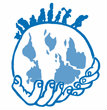At the end of this week’s negotiation on the pandemic accord, Roland Driece, co-chair of the Intergovernmental Negotiating Body (INB) charged with drafting a pandemic accord, told the final plenary on Friday that “it’s not easy” – a phrase that he repeated four times in the space of minutes.
To ease difficulties, the INB piloted a new approach involving informal sessions to “bridge gaps” on the sidelines of the formal drafting session, Driece said.
Two informal sessions were held on one of the trickiest aspects of the negotiations: Article 9 (Chapter Two) of the current pandemic accord draft, dealing with the research and development (R&D) of pandemic products. Mexico and Norway facilitated the sessions, while experts were on hand to respond to technical questions.
Meanwhile, in the formal drafting committee, member states “exchanged views” on Articles 9 (R&D), 10 (liability risk management), 11 (technology transfer), 12 (access and benefit-sharing of pathogen), 13 (supply chain) and 14 (regulatory strengthening).
